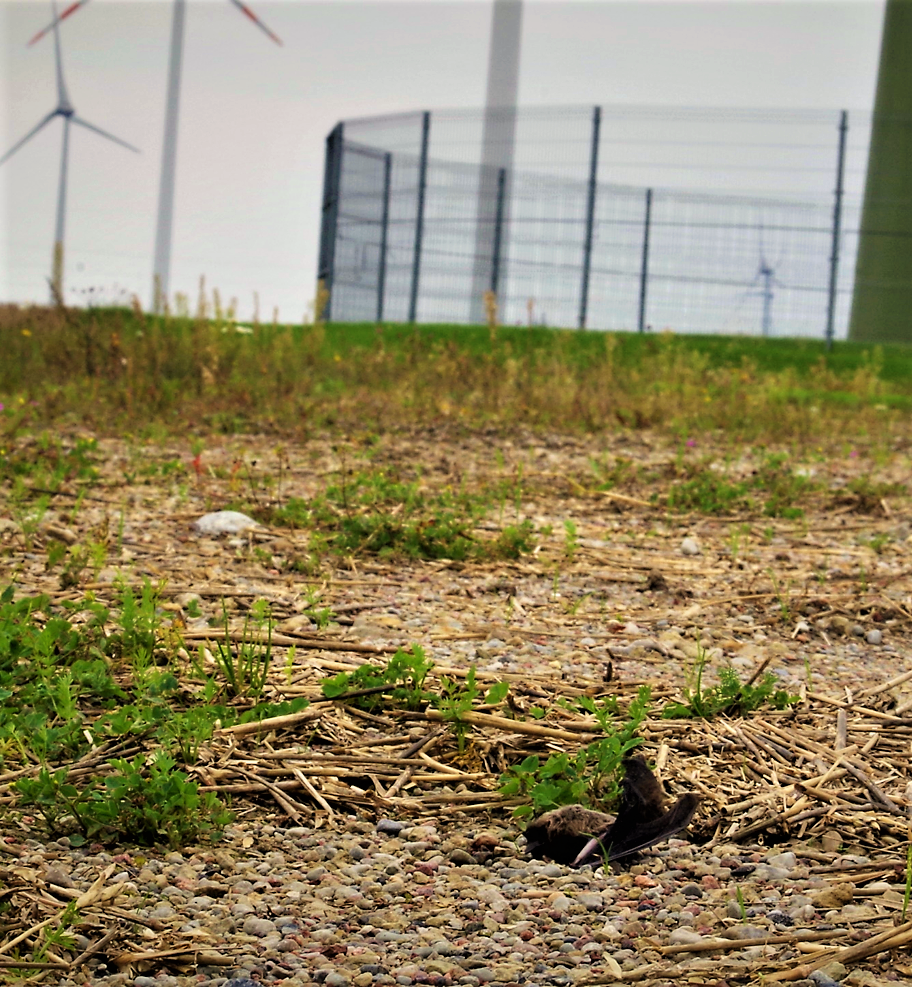Wind turbines generate green energy and thus contribute to the climate protection goals. However, wind turbines also kill thousands of bats every year by collision or barotrauma. Actors involved must make important decisions in this emotional green-green dilemma. However, stakeholders also have different views on what is more important in this dilemma: green energy or species protection.
In March 2019, a survey was conducted at the Leibniz Institute for Zoo and Wildlife Research with stakeholders from the wind energy sector, nature conservation authorities and environmental and nature conservation organisations, as well as researchers and experts, in order to shed light on the topic from a socio-scientific point of view. From a total of 537 responses, two publications emerged (Voigt et al. 2019; Straka et al. 2020). The first publication presented the different perspectives of the actors involved. Actors in the wind energy sector, for example, felt more than other actors that wind energy generation is a higher priority than biodiversity objectives, that the energy transition contributes to nature conservation or that a delay in the development of the wind energy sector due to biodiversity protection is less acceptable. The majority of respondents (80%) agreed that there is a conflict between the production of green energy and the protection of bats. Furthermore, most stakeholders agreed that more research is needed to find solutions to this green-green dilemma (Voigt et al. 2019).
While the different perspectives illustrate some intersections but also very different points of view, the question for the authors was what people can learn from them in order to improve the cooperation between the actors in the field of energy expansion. It is well known from the social science literature thattrust is the central basis for successful cooperation between actors. In this context, beliefs, emotions and values play a major role in the actors, because they influence trust in each other.
Based on these theories, the aim of the second publication from the survey was to understand (i) how, on the one hand, the trust between actors among themselves, but also with politicians in relation to climate and species conservation objectives, (ii) which of the Confidence-influencing components (values, beliefs or Emotions) play a role in this and (iii) how the actors, in addition to their convictions regarding wind power, including in their values in dealing with nature and its emotions to wind power and bats.[1]
The three main commonalities in terms of trust were that overall trust in politicians was very low. In contrast, all actors showed a high level of trust in environmental and nature conservation organisations. Confidence in wind energy stakeholders was different. While members of the wind energy sector had a relatively high level of trust in their own group, most other actors (e.g. experts, government officials, volunteer conservationists) did not have much confidence in members of the wind energy sector.
The socialscience-exciting question continues to be which of the measured components – values, emotions or beliefs – influence trust the most. This analysis showed that beliefs, such as the importance of wind turbines over species protection, have the most impact on trust among stakeholders. These beliefs about the relevance of wind turbines were shared primarily by actors in the wind energy sector, as opposed to actors from the voluntary nature conservation sector.
The fact that convictions have a high impact on the trust of the actors in each other and that there is a large discrepancy here can first be seen as a major challenge. However, the study also showed that the actors are overwhelmingly in agreement with nature in their values. All actors appreciated a sustainable approach to nature.
In summary, the study showed that there is a lack of confidence among the actors in the field of tension between wind energy and species protection, which makes it difficult to resolve the conflict. The good news, however, is that all actors agree on their values for a sustainable approach to nature.
As possible practical indications from the conclusion of the study, we suggest that interactions between actors should be promoted more strongly, as interactions promote trust and cooperation. This includes making processes transparent and sharing power structures in order to involve all stakeholder groups equally in decision-making. Furthermore, in addition to an evidence-based knowledge analysis, the different beliefs of the actors regarding green energy and the protection of biodiversity should be taken into account during discussions and solution-finding processes – only if one respects the beliefs of others and is aware of this, one can solve problems in a targeted manner and, for example, find compromises.
Tanja Straka, Marcus Fritze

References:
- Voigt, C.C., Straka, T.M., Fritze, M. (2019): Producing wind energy at the cost of biodiversity: A stakeholder view on a green-green dilemma. Journal of Renewable and Sustainable Energy 11, 063303 (2019); https://doi.org/10.1063/1.5118784.
- Straka, T. M., Fritze, M., Voigt, C.C. (2020): The human dimensions of a green–green-dilemma: Lessons learned from the wind energy — wildlife conflict in Germany. Energy Reports (6), 1768-1777; https://doi.org/10.1016/j.egyr.2020.06.028.
[1] The public is, of course, also an important player when it comes to wind turbines. However, the public was not involved in this study, as there is already sufficient literature on the so-called Nimby phenomenon (‘Not in my backyard’).
